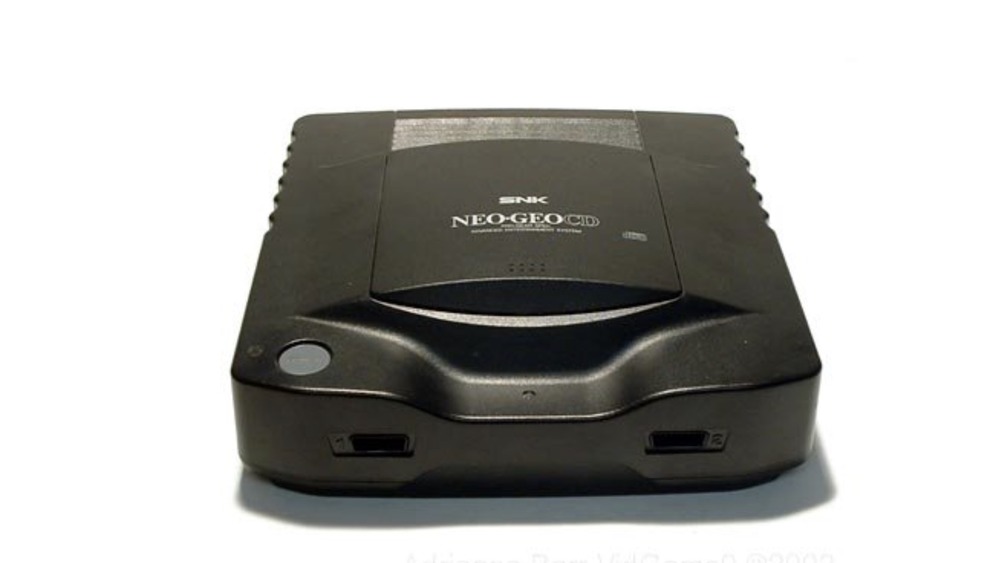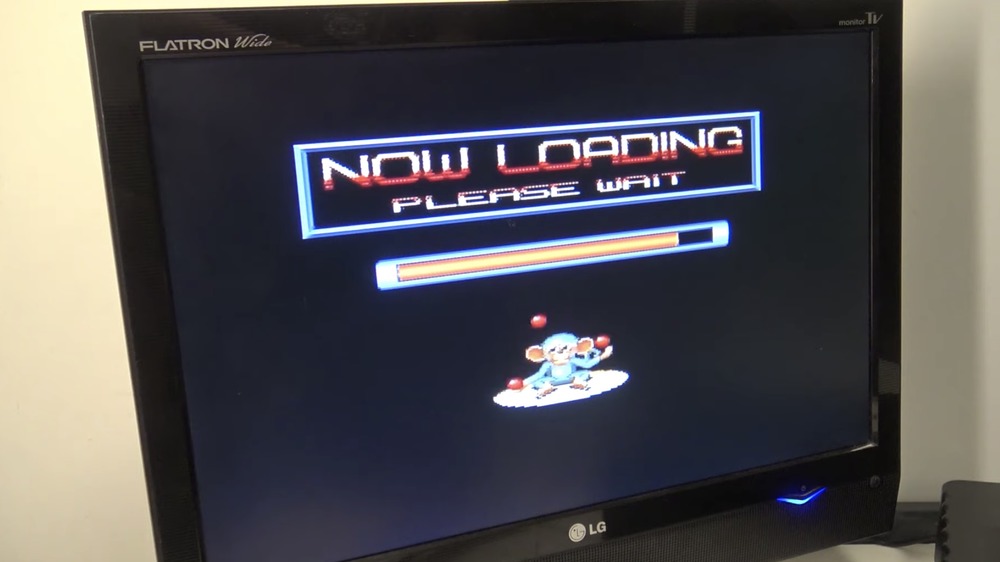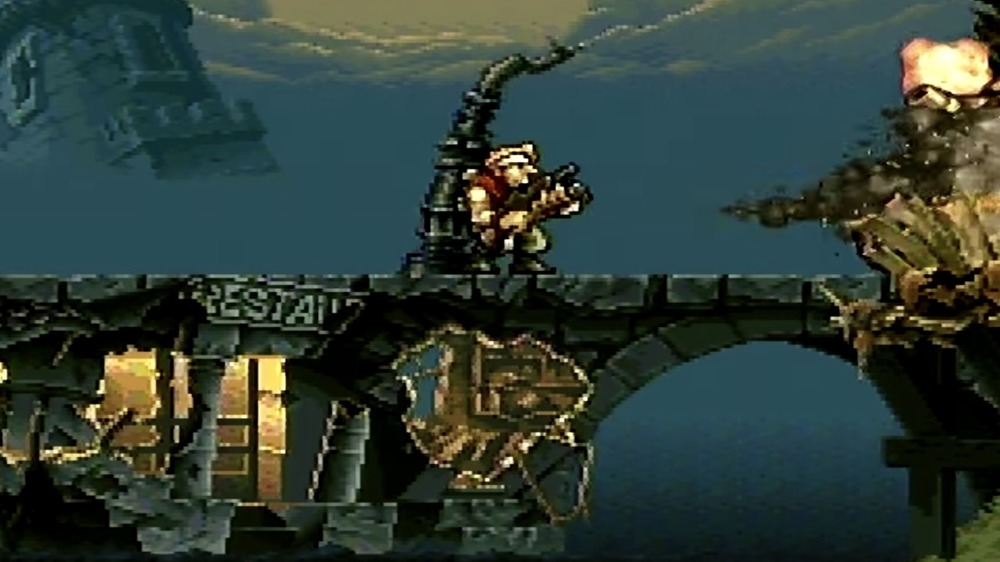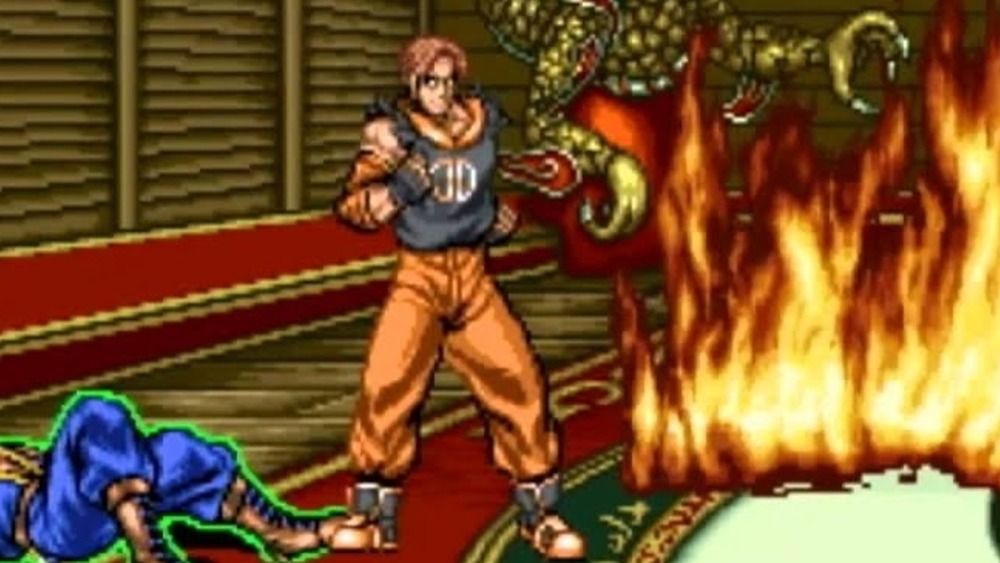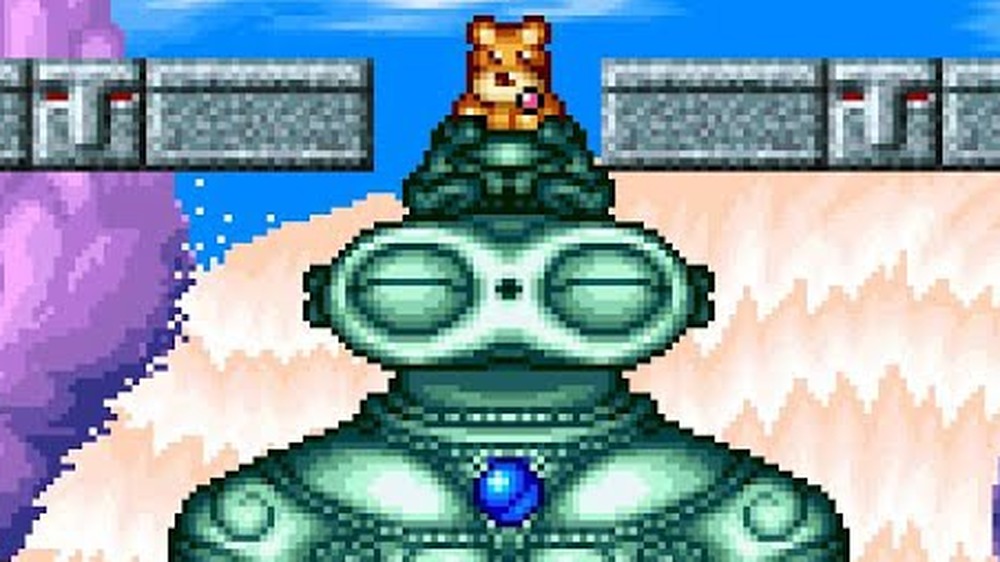The Untold Truth Of The Neo Geo CD
We may receive a commission on purchases made from links.
Back in 1994, arcade company SNK Corporation released its second home gaming console, the Neo Geo CD. The disk-based system was the follow-up to its 1991 cartridge-based Neo Geo Advanced Entertainment System (AES), which was the company's first attempt to infiltrate homes and had a limited audience with a $599 console and $200 games. The AES was based on SNK's arcade system, the Multi Video System (MVS), which allowed arcade owners to switch out multiple games in one cabinet.
In its second attempt at capturing the home gamer market, SNK switched to CDs with a machine that contained similar hardware to the AES. Unfortunately, although the unit cut costs considerably, with games priced at just $50, the $399 CD console was slow, with long load times that only got worse as games became bigger. SNK attempted to fix this with the Neo Geo CDZ, but that wasn't until 1995, when the industry had left Neo Geo behind.
In the end, the Neo Geo CD never captured the market share that would make it a success. But there's more to the history of the Neo Geo CD than that of just another failed system. Here's the truth about this forgotten console.
It's among the last consoles of its generation
Considered part of the 16-bit fourth generation of gaming consoles that ended in about 1994, the Neo Geo CD (and the Neo Geo AES, too) was surrounded by competitors. These included systems that continued to sell well while the Neo Geo CD was new, including the Sega Genesis and the Super Nintendo Entertainment System. However, because the Neo Geo CD entered the generation so late, it was basically competing with all the 16-bit, 32-bit, and 64-bit systems available in that era, from 1995's Atari Jaguar CD to the Sony PlayStation, the Sega Saturn, and, in 1996, the Nintendo 64.
Ultimately, the technology of the Neo Geo CD, which featured a 2D architecture that was basically the same as the AES except for the CD drive, never matched up to that of its 3D competitors. Considering that the Neo Geo CD came out in September and was followed in December by the Sony PlayStation, it wasn't going to develop much of a shelf life. In some ways, it was a victim of timing.
It's region-free and import-friendly, so current playability remains high
According to gamer Adam Koralik, today's games are very dialogue-heavy and full of text, which means you can't truly just pick up and play a game from another country with ease, even if region coding didn't exist. The Neo Geo was actually region-free and could also play audio CDs. And, the Neo Geo library, which includes a large number of fighting games, sports games, and arcade-style titles, includes many games "that anybody can just jump into," he said.
The stable of Neo Geo games includes titles that continued getting released into the 2010s, believe it or not. It also included platformer Top Hunter: Roddy & Cathy, flying disk game Windjammers, King of Fighters '98 (and others in the series), Samurai Shodown 1-4 , Pulstar, the Metal Slug games, and several Fatal Fury games. Many are considered quite good, and it's true — they don't tend to have much story. For collectors into retro-style gaming, these titles remain pretty fun.
The Neo Geo CD mainly rehashed preexisting games – and not as well
According to fan site Neo-Geo.com, about 97 Neo Geo CD games playable on the early Japanese front-loading system, the American top-loading one, and the CDZ from 1995 — which was supposed to double the speed of the CD drive — were ultimately released. Many games were simply new versions of their cartridge counterparts, but with a few differences. Some had extra game modes or galleries added, and many of them had official audio soundtracks attached. However, fans say that many of the games also had cut content, such as missing objects or rearranged music. There were only eight games made exclusively for the Neo Geo CD.
The problem was, the system had especially tedious load times that could go up to 120 seconds, which is long even for that era. Judging from the reactions from some fans, even for the most hardcore collectors, the cons of owning a Neo Geo CD outweigh the pros.
Some dedicated gamers tried to bring Neo Geo CD games back in the 2010s
As mentioned earlier, there were several games that came out for the Neo Geo in 2011-2012. These were produced by a company called Neo Conception International (NCI), a French-Japanese organization that was formed in 2010 to gain the rights to old Neo Geo properties that never saw the light of day.
It released three Neo Geo games total between 2011-2013: Bang Busters, Treasure of the Caribbean and Andro Dunos. The company had plans to put out more material, including a finished version of Warlocks of the Fates, a fighting game originally set for release by Astec 21. Unfortunately, NCI hasn't done much of note since 2013, in spite of rumors about projects in the works. While the company announced a licensed version of the game Ganryu in 2016, its website is no longer in existence. The Facebook page was active as recently as 2019, but it looks like NCI is defunct now.

